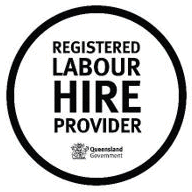In the business world, 75% of companies are either using, or planning to use social media for recruiting. However, over a third of these companies are failing to achieve high levels of success or engagement through the use of blogs, Facebook and Twitter.
In order to be successful in the use of social media, it is essential that companies utilise the internet as an avenue to promote their image and mission statement. Social media must be used as a means to showcase the ‘human’ side of your business, and display culture as well as diversity.
In an article completed at the University of Twente, it was found that human capital and employer branding are the two principal assets of any business. In order to maximise recruitment, social media must be used in such a way that the business brand, as well as the employees themselves are showcased to potential customers/clients.
Blog
The primary location for the information of your business should be the blog. The majority of information relating to employees, or potential employees, will be laid out here under a ‘Careers’ tab. It is essential that the blog is friendly and humanised, in order for potential employees to feel connected to the culture and mission of your business. The blog must also be used to link to other key social media sites (where the majority of your business’ following will be located).
Additionally, the blog should also be used to give advice in regards to job-hunting, HR and recruiting. This allows for potential employees to feel as though your company is personally assisting them in finding a job, which will ideally be at your business.
A business’ Facebook page is often the central connecting point between the business and potential employees. Here, the ‘humanising’ element of the blog should be maximised in order to create a personable character for the business. Through the Facebook page, current employees should be displayed, including their role at your company, their achievements and any behind-the-scenes advice or information. People respond to the positivity of others, and if your employees are pictured with a smile and a positive story, it is likely that potential employees will apply to work at your business.
Another important point to note is that Facebook is personal and authentic, and therefore honesty and transparency are key elements to the success of this social media site.
It is also important to view the Facebook page as an avenue in which a community can be built around your business. The greater the activity on your Facebook page, the better the conversation in regards to your business. This in turn creates a ‘buzz’ that effectively self-markets your Facebook page to potential employees.
The branding concept to be brought onto Twitter is quite similar to the approach taken for the Facebook page. Despite this, there is one major difference, that being direct communication. Twitter is a media landscape that focuses on instant or near instant communication, where topics of interest are generated, sparking conversations. Therefore, the Twitter account of your business must also be quite humanised. Perhaps it should be more relatable than your Facebook page, since there is direct and almost instant conversation where questions are answered and topics are discussed.
The Twitter account could be utilised to bring about conversations regarding HR, job-hunting, general trends in your industry or simply current affairs. The goal, however, is to keep the account light and personable in order to draw potential employees into your community, who would in turn apply to work at your business.



